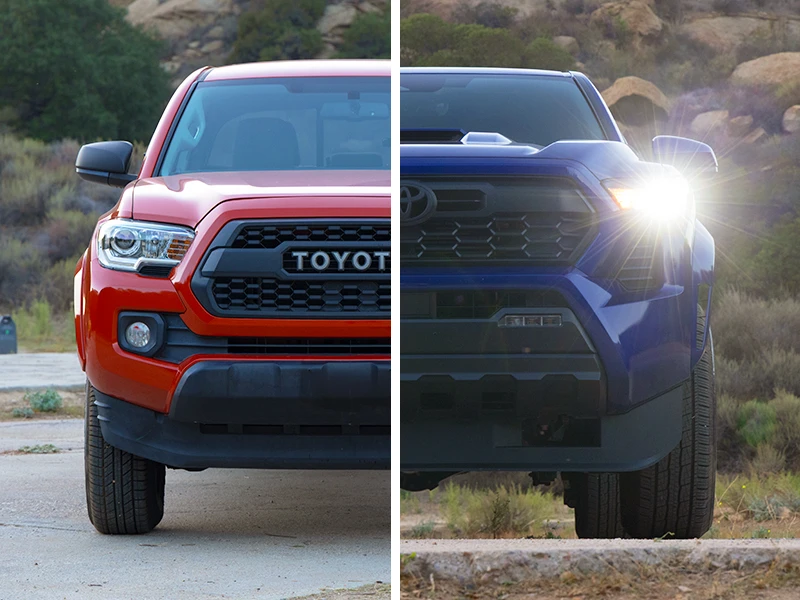
Nine affordable used electric vehicles to consider.
With thousands of vehicles in our inventory, we’re here to help make car research easier for you. We’ve partnered with car-review experts from Edmunds to weigh in on what matters most when you’re looking to buy a truck or car.
***
Vehicles Reviewed
If "affordable electric cars" sounds like an oxymoron, we get it. Whether buying used or new, it can feel difficult, if not downright impossible, to find an inexpensive electric car. But don't worry, even budget shoppers have electric vehicle (EV) options. We're going to take a look at seven electric cars with an average listing price on CarMax.com under $25,000—and two more that are under $30,000.
Why are we picking that $25,000 mark? Because starting in 2023 there's a new tax credit of up to $4,000 on used electric vehicles costing less than that, and who doesn't want to save a few bucks at tax time? Just note that some of these tax credits have limitations depending on your income and a few other factors, so make sure you check all the boxes, and check out this article from Edmunds for the details.
Be aware that upper trim configurations and select model years may bring the prices of some of these vehicles over $25,000
Used Electric Vehicles Under $25,000
Chevrolet Spark EV

Years available: 2014-2016
Max range: 82 miles
Average price on CarMax.com: $11,716
With a name like "Spark," it's maybe inevitable that Chevrolet would make an electric version of its tiny gas-powered hatchback. The Chevy Spark EV was only sold for three years and was only available in a handful of states (California, Maryland, and Oregon), but it offered an intriguing value to the EV-curious. Its EPA-estimated maximum range of 82 miles
is the least of any vehicle on this list, and its long charge time compared to rivals may be a concern if you're not able to install a 240-volt or Level 2 charger in your garage. The Spark uses a relatively slow 3.3-kilowatt onboard charger, which was behind the competition when it was new and means it could take up to seven hours to charge it using a Level 2 charger.The good news is that the Spark EV was available with DC fast charging, which can replenish 80% of the battery in 20 minutes. If you're primarily using the Spark as a way to get around town without using gas, it could be a good option.
Ford Focus Electric

Years available: 2012-2018
Max range: 115 miles
Average price on CarMax.com: $13,267
As Ford’s entry into the compact car segment, the gas-powered Focus offered a lot to a wide variety of buyers: sedan or hatchback body styles, a multitude of engines and trims, a fun-to-drive demeanor, and plentiful standard and available features. In 2012, Ford expanded the appeal of the Focus with the addition of the Focus Electric to the lineup. Even though its range for 2012-2016 models was only an EPA-estimated 76 miles, that was competitive against the Nissan Leaf and other EVs at the time. In 2017 the Focus Electric received an improved battery, upping its range to 115 miles.
Otherwise, it received few substantial changes over its lifetime. The Focus Electric is relatively fun to drive and has a nice interior. Models from 2017 and later come with Apple CarPlay® and Android Auto™ thanks to the SYNC® 3 infotainment system. Just note that the back seat is a bit cramped and that the battery takes up a large portion of the cargo space. But for an around-town EV runabout, the front seats are suitably roomy.
Kia Soul EV

Years available: 2015-2019
Max range: 111 miles
Average price on CarMax.com: $17,260
You guessed right: The Kia Soul EV is an electric version of Kia's tiny Soul SUV. Available in base or + trims, the Soul EV offered up a lot of what makes the gasoline-powered Soul so popular: an exceptionally roomy cabin, a big 8-inch touchscreen infotainment system, and automatic climate control. You may encounter a California-only trim called EV-e, which actually undercut the regular base model by reducing features, such as offering a smaller touchscreen.
One downside to the Soul EV is its overall range, which tops out at an EPA-estimated 111 miles.
That's not a lot, but it's good enough for around town, and the Soul does come with fast charging. While the Soul EV isn't quite as fun to drive as the gas-powered Soul, it's notably quieter on the road thanks to its electric drivetrain, and it rides more smoothly as well.BMW i3

Years available: 2014-2021
Max range: 153 miles
Average price on CarMax.com: $21,033
Yes, you can get an electric BMW for under $25,000. The BMW i3 was introduced in 2014, and its range was improved several times during its eight-year run, culminating in an enhanced EPA-estimated range of 153 miles in its final year on sale. That's nearly double the 81 miles of range it had when it debuted in 2014. In addition to the extra range, the i3 was also available in a range-extended version that added a small gasoline-powered generator that could provide additional range. For 2019-21
, that meant range-extended BMW i3s had 126 miles of electric-only power, plus an extra 74 miles when using the range extender, for a total of 200 miles. These range-extended models aren't pure EVs since they require some gas, and they tend to cost a bit more, but that extra range can be useful when you need it.Whether you choose the extended-range or pure EV, all i3s offer a luxury interior and a surprisingly comfortable ride given its size. There is plenty of room for four adult passengers—the i3 only seats four, as there are cupholders where the middle rear seat would be—but the rear doors can't be opened from the inside due to the unusual layout of the i3's doors. (They're similar to the third door you'll find on some pickup trucks.) so it's not as convenient as a minivan or SUV, for instance. Every i3 came standard with LED headlights and adaptive cruise control, and more features were added to the standard list through its lifetime. The extensive options list included leather seats, and a package that added more driver assist systems such as lane keeping assistance. Apple CarPlay was available on 2018 model year i3s and standard from 2019 onward.
Volkswagen Golf Electric

Years available: 2015-2019
Max range: 125 miles
Average price on CarMax.com: $22,045
The earlier entries on this list are not shy about using their styling to announce that they're electric vehicles. If you want something more subtle, the Volkswagen Golf Electric (or Volkswagen e-Golf) is a great option. It is, as its name suggests, an electric version of Volkswagen's popular Golf hatchback and has a comfortable, quiet ride and an interior with high-quality materials.
Its range maxes out at an EPA-estimated 125 miles for 2017 and newer models, while earlier Golf Electrics can only manage 83 miles on a full charge.
Those earlier Golf Electrics are still nice to drive and have plenty of trunk space, which is a welcome benefit, especially for families, but if range is an issue, keep an eye out for deals on e-Golfs made in 2017 or later.The base SE trim offers dual-zone automatic climate control, heated front seats, and Apple CarPlay and Android Auto. To get DC fast charging, you'll need to find a 2017 Golf in the Limited trim. Better yet, look for the 2019 e-Golf, the final year of its production. Even the base model got fast charging, along with a number of standard driver-assist features.
Nissan Leaf

Years available: 2011-present
Max range: 212 miles
Average price on CarMax.com: $22,392
The Nissan Leaf has been around for more than a decade and comes in a variety of flavors. The first-generation Leaf, which covers model years 2011 to 2017, is known for its quirky shape and relatively low range. The most range you can get from a first-generation Leaf is an EPA-estimated 107 miles, while the second-generation Leaf comes with up to 215 miles in EPA-estimated range.
Additional range isn't all that improved with the 2018 Leaf, which marked the start of the Nissan EV's second generation. It received a much wider selection of driver-assistance features and features like Apple CarPlay and Android Auto on every trim except the base S trim. The 2018 Leaf gets an EPA-estimated 150 miles of range; you'll need to find a 2022 Leaf or newer to get more than 200 miles of range.
Keep in mind that the Leaf uses the CHAdeMO charging port for fast charging. While those chargers are plentiful, you may not find this exact port at every fast-charging station.
Hyundai Ioniq Electric

Years available: 2017-2021
Max range: 170 miles
Average price on CarMax.com: $24,119
While it has a similar name, the Hyundai Ioniq Electric is not the same as the new Hyundai Ioniq 5. It's also distinct from the Hyundai Ioniq hybrid, both of which are no longer in production. But the Ioniq Electric is a comfortable hatchback, with interior and cargo room comparable to a compact SUV, and an EPA-estimated 124 miles of range on earlier models.
The base trim (referred to as both Base and Electric) gets you Apple CarPlay and Android Auto, a 7-inch touchscreen, and heated front seats. Finding a Limited trim adds many advanced driver aids, a larger touchscreen, a sunroof, and an upgraded audio system.For the 2020 model year, Hyundai increased the range to an EPA-estimated 170 miles.
Those models, and newer, also charge more quickly and receive a small power increase from 118 hp to 134 hp. The base SE trim on those models adds many advanced driver aids, such as adaptive cruise control and automatic emergency braking. The Limited, as with older models, adds a sunroof, a larger touchscreen, and wireless device charging.Used Electric Vehicles Under $30,000
Chevrolet Bolt EV

Years available: 2017-present
Max range: 259 miles
Average price on CarMax.com: $25,920
The Chevy Bolt is, in some ways, the successor to the Chevy Spark EV. Its range is much improved over some older electric cars, and it remains a good value. It offers a nice interior and up to 259 miles of EPA-estimated range on a single charge.
Newer EVs offer faster charging, but the Bolt still tops most others on this list. The ride quality is on the rough side, which is unusual for an electric vehicle.The good news is that even the oldest Bolts (model year 2017) offer a solid 238 miles of range
and Apple CarPlay along with Android Auto. The cabin is spacious, and the plus side to the stiff ride quality is that the Bolt is surprisingly fun to drive. Note that 2021 and older Bolts have a sluggish touchscreen, and that many advanced driver aids available on competitor vehicles are only available on higher trims of the Bolt or, in the case of adaptive cruise control, not at all until the 2022 model year.Mini Cooper SE

Years available: 2019-present
Max range: 114 miles
Average price on CarMax.com: $29,498
The Mini Cooper SE is the all-electric version of the Mini Cooper, and like its gasoline-powered siblings it's suitably quirky. Like them, it offers a premium feel while retaining its fun-to-drive nature. The problem is its range, which was only an EPA-estimated 110 miles in 2019-2021 models, and 114 miles since 2022.
That's quite a bit less than you'll find on electric cars that are far more affordable.You get standard wireless Apple CarPlay on 2022 and newer models, but Android Auto is nowhere to be found. It only offers one USB port, which can be a challenge if you're hoping to charge more than one phone at a time. Given its small size, it's not surprising that interior storage is poor. The Mini Cooper Electric's cargo area is 8.7 cubic feet, which is half of what you'd find in the Chevy Bolt.
But if you like the idea of owning a Mini Cooper and are faithful about charging frequently, you might consider this EV. It offers a well-designed and comfortable interior and it is one of the most fun electric vehicles you can buy. It's quicker than vehicles like the Chevy Bolt, Hyundai Kona EV, and Kia Niro EV, and its sporty steering and suspension make driving around town a blast.
Edmunds' Take
Not all electric cars come with a luxury price tag, but finding a bargain means understanding the trade-offs you'll have to make in the process. All of the electric cars on this list get less than 200 miles on a single charge, so they're best suited for around-town driving. That said, if you can charge at home and don't have a long commute, a smaller battery may not be an issue for you. If you don't need much in the way of range, you may find one of these affordable electric cars does everything you need—all while saving money on fuel.




